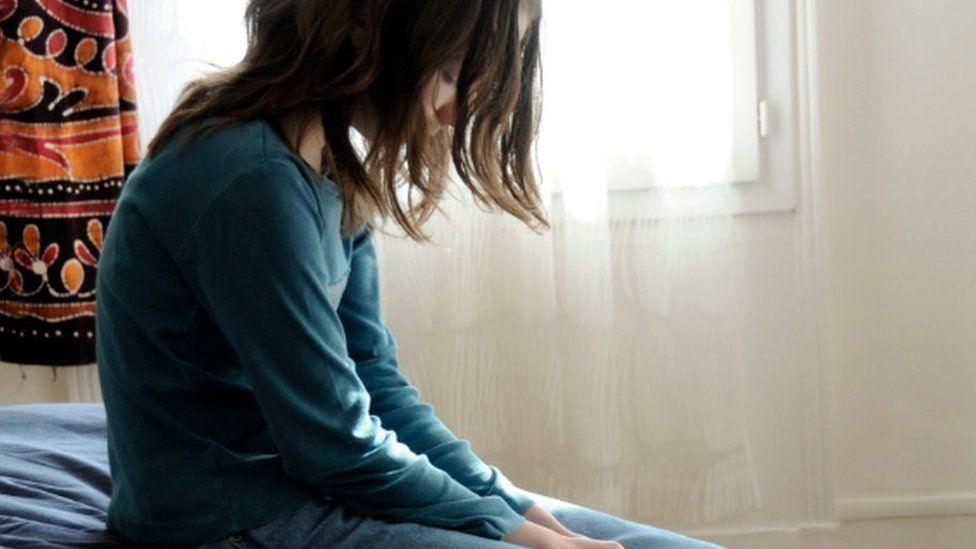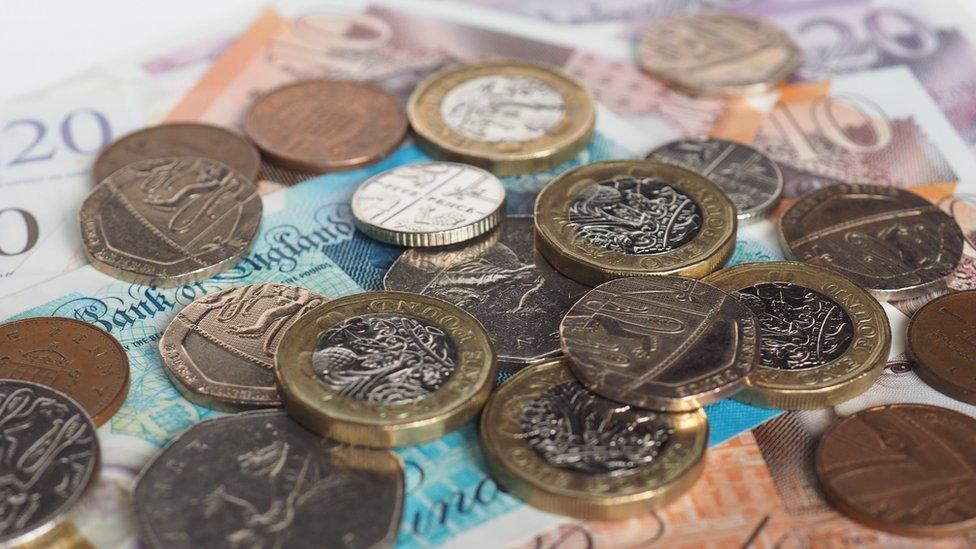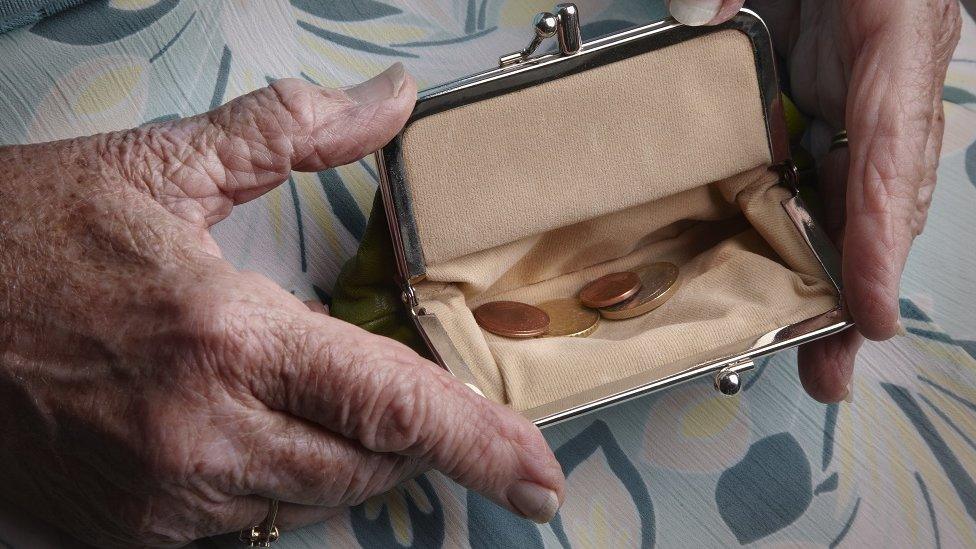Cost of living: Child poverty on the rise in Northern Ireland
- Published

Figures suggest around 109,000 children in Northern Ireland were living in relative poverty in 2022
The number of children living in poverty in Northern Ireland showed a significant increase in 2022, official figures suggest.
They indicate that about 109,000 children or 24% were living in relative poverty, compared to 19% in 2021.
Most other poverty indicators worsened, although pensioner poverty continued its long term improvement.
The general increase in poverty coincided with the spike in energy prices and other costs.
The figures from the Department for Communities use two main measures of living standards: relative poverty and absolute poverty.
Over the past decade the percentage of children living in relative poverty in Northern Ireland has hovered at about 20%.
It reached a high of 25% in 2014 and a low of 18% in 2021.
The long term trend shows that children are at a higher risk of living in poverty than the overall Northern Ireland population in both relative and absolute measures.
The new figures also suggest that the percentage of pensioners living in absolute poverty fell to just 7% in 2022, down from 12% the year before.

How is poverty measured?
There are two main measurements of low income used by the government. Income is counted as the money a household has to spend after housing costs are taken into account.
Absolute poverty measures how many people this year cannot afford a set standard of living. The Department for Work and Pensions currently defines it based on the living standard an average income could buy in the year ending in March 2011. If your income is 40% below this, after adjusting for rising prices since then, you are classed as living in absolute poverty.
Relative poverty is the number of people whose income is 40% below the average income today.

The UK has seen the biggest increase in poverty for 30 years
An individual is considered to be in relative poverty if they are living in a household with an income below 60% of the typical UK income.
This is a measure of whether those in the lowest income households are keeping pace with the growth of incomes in the population as a whole.
In 2022 the relative poverty threshold for a couple with no children was an income, from all sources, of £373 per week, before housing costs.
For a couple with children the threshold would be higher and for a single person the threshold would be lower at £250.
An individual is considered to be in absolute poverty if they are living in a household with an income below 60% of the typical UK income as measured in 2010.


Figures show the percentage of pensioners living in absolute poverty has fallen
Figures, produced on the same basis, for the UK as a whole suggest poverty rates in Northern Ireland are better than the UK average.
The rate of absolute poverty in the UK in 2022 was 18% while in Northern Ireland it was 14%.
The rate of absolute child poverty in the UK was 25% while in Northern Ireland it was 19%.
In recent years Northern Ireland has generally had lower rates of poverty than the UK as a whole.
That may be because Stormont introduced measures to mitigate the impact of benefit cuts imposed by the Conservative and Liberal Democrats coalition.
For example the 'bedroom tax' has effectively been disapplied in Northern Ireland.
Related topics
- Published18 March 2022

- Published21 March 2024

- Published26 April 2023
